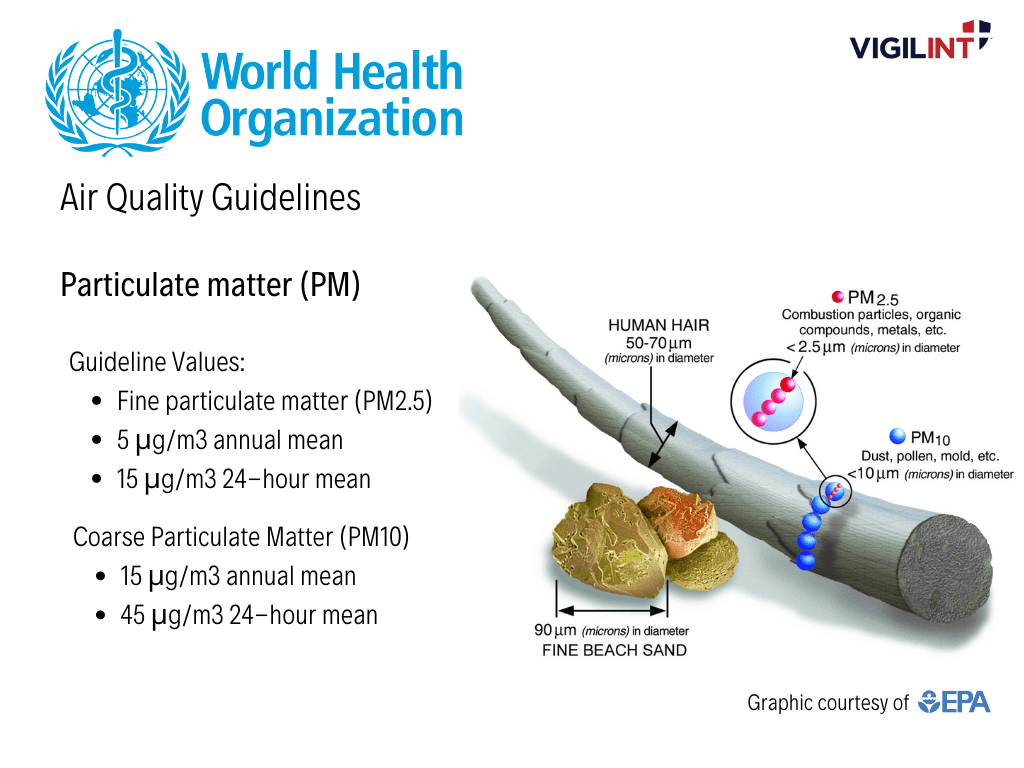The European Commission has crafted a set of pollution rules for the European Union to implement by 2030. The end goal is to fully eliminate harmful pollutants in the air, water, and soil by 2050. While the fate of this policy and its actual outcomes remains to be seen, it has sparked a renewed focus on air pollution in the EU and beyond.
Currently, air pollution is one of the most deadly ambient health issues worldwide. The European Environmental Agency (EEA) estimates that air pollution in the EU accounted for 238,000 deaths in 2020 alone. Please note that this number does not include morbidity–people dealing with serious and lasting health impacts stemming from air pollution. In the United States, 200,000 annual deaths resulted from air pollution annually per a 2013 MIT study. Roughly half of these deaths are due to fine particulate matter produced while burning fossil fuels, with animal agriculture, dust from construction and roads, and burning wood accounting for most of the rest. Globally, air pollution and air pollutants are responsible for one in five deaths, killing more than 8 million people in 2018 alone, including 350,000 premature deaths attributed to fossil fuel pollution in the United States.
Steps for Reducing Air Pollution
Within the EU, the EEA and the EU executive branch seek to put a cap on the level of fine particulate matter in the air. The legal limit under the proposed rules would be 10 micrograms per cubic meter by the end of the decade, which would in turn, represent a significant improvement over the current level of 25 µg/m³.
While this would be a significant step and position the EU as a global leader in combating air pollution, some experts say it simply isn’t enough. The current World Health Organization air quality guideline sets the following safe limits for air pollution and particulate exposure:

The current EU/EEA proposal would allow levels of air pollution that are roughly twice what the current WHO guidelines suggest are acceptable, and this difference in goals and standards has led to opposition from scientists and environmental advocates who claim that the EU proposal endangers human health. Per Anne Stauffer, deputy director of Health and Environmental Alliance (HEAL):
“We are faced with a public health emergency from air pollution – tackling it requires political will, for immediate and long-lasting health benefits. Where the Commission shied away from proposing what’s needed, the European Parliament and Member States now have to step up, to save lives and prevent disease. This is done by fully aligning with the updated WHO guidelines by 2030 at the latest and with a strong enabling framework, including limit values and enforcement mechanisms.”
Stauffer’s voice is one of many suggesting that the EU’s limits will remain unacceptably high, and that solving the problems posed by air pollution requires more aggressive action both in the EU and globally. This issue is complicated by a December 2022 decision from the European Court of Justice which found that individual citizens cannot sue their respective nations for failing to meet the air pollution goals set by the new law.
Reducing Risk from Air Pollution
Air contamination in the United States remains a significant national and regional issue. The American Lung Association releases an annual study of the most polluted cities in the US, with the resulting lists broken down by ozone exposure, year-round particle pollution, and short-term particle pollution. The ALA study also explores the health effects of air pollution for children and adults, which may include wheezing and coughing, shortness of breath, asthma attacks, worsening COPD, lung cancer, increased risk of heart attack or stroke, impaired cognitive function, and premature death. While air pollution has health impacts across the US, the highest number of deaths per capita are found in the states of Pennsylvania, Ohio, Michigan, Indiana, Kentucky, West Virginia, Illinois, New Jersey and Wisconsin.
While policy changes and stricter environmental laws are the best route forward in combating air pollution, there are steps individuals may take to protect themselves:
- Monitoring the Air Quality Index (AQI) in the area where they live
- Signing up for updates and alerts about their local AQI
- Limiting or adjusting outdoor activities on poor AQI days
- If you deal with asthma or other respiratory conditions, keep your inhaler handy during physical or outdoor activity
More information regarding air pollution, air quality, and personal health can be found at the Center for Disease Control’s air quality site. We will post further updates as to changes in policy and environmental standards as the situation evolves.
